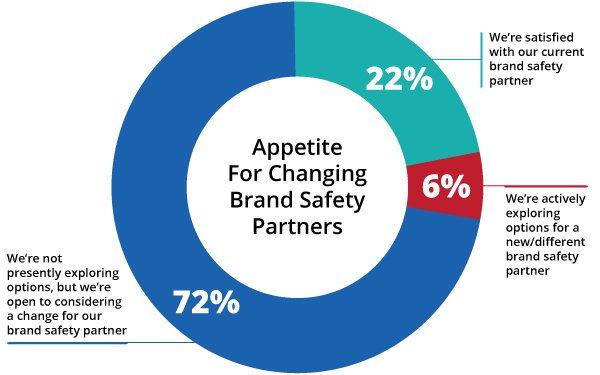
Marketers want new brand
safety and viewability tools that can adapt to emerging environments, restore transparency, and deliver on changing definitions of success.
Brand safety and transparency tools have long
secured the foundation of digital advertising and media buying to identify where ads actually ran and whether they were seen.
But as technology advances at lightning speed, several major
challenges have not been met, according to findings from a recent survey of 50 senior marketers from across industries conducted by Human Security, a cybersecurity company that offers
brand-safety solutions as part of its services.
Engagement with ads does not always correspond with conversion rates, and viewability does not necessarily mean the ads got attention
because people could be multitasking.
advertisement
advertisement
Survey responses indicated that marketers
are challenged by confusion and concern about how generative and agentic AI will impact digital advertising.
Lack of transparency and actionable reporting, over-reliance on keyword blocking
that limits reach and can misclassify content, and limited support for non-traditional inventory were also cited as major challenges. Marketers demand better context, smarter controls, clear
diagnostics, and faster feedback loops.
Human’s survey asked about use and perception of brand safety and viewability platforms. The goal was to understand whether today’s
verification tools meet expectations -- a topic fueled by the company’s July study that found a gap in signal verification tools.
Feedback was gained from the respondents’
definitions of success in brand safety and viewability for traditional media such as linear TV, and web display and video, as well as emerging media such as connected TV (CTV) audio, and in-game and
in-app advertising.
Thirty-six out of the 50 respondents rated their viewability partner as average based on their definition of success on emerging media, and half rated their viewability
partner as average on traditional media.
The results indicated that marketers' needs are often not met, and respondents believe this continues to impact business based on failures in brand
safety and viewability.
Seventy-eight percent of respondents have been actively pursuing or willing to consider a change in their brand safety and/or viewability partner.
The survey
found that overall user satisfaction with viewability tools fell nearly 30 points lower on emerging media than on traditional media, while user satisfaction with brand-safety tools fell 40 points on
emerging media compared with traditional media. This means that the total percentage of respondents rating their satisfaction as a 4 or a 5 dropped 40% from traditional to emerging media.
One
key theme, based on unmet needs with brand safety, centered on the inability of the technology to solve for every possible issue on every platform.
Marketing teams with broad approaches found
this to be a significant challenge with influencer and social marketing, walled gardens, and emerging platforms such as audio and in-game advertising.
Half of the respondents reported an
internal resource drain due to a failure, and just under half experienced increased media costs. But 30% of respondents experienced a loss of customer trust or customer churn, and 26% suffered a
measurable decline in brand sentiment.
The study also suggest these are not small issues because losing customers and spending time and money mitigating problems and backlash to account for
failures in brand safety or viewability have massive effects on marketing and media planning, which in turn affects the company’s ability to forecast.